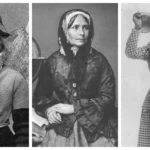Ever seen that striking cross resembling a sword? That’s the Cross of St. James, a symbol steeped in history and legend, particularly prominent in Spain and Portugal. More than just an ancient artifact, it’s a symbol woven into the cultural fabric, appearing in epic battles and religious pilgrimages. This exploration delves into the myths surrounding its origins, including its miraculous appearance in warfare, its contemporary significance, and its enduring relevance to the famed Camino de Santiago pilgrimage. We’ll navigate the realms of truth and legend, dissect the symbolism inherent in its design, and understand its profound importance. By the end, you’ll possess a richer appreciation for this enduring emblem and its captivating narrative. For more on Catholic crosses, see this helpful resource.
St James Cross: A Journey Through History and Legend
What is the historical timeline of the St. James Cross and its role in shaping Spanish national identity?
The St. James Cross – easily recognized by its distinctive form with elaborate flourishes and a sword-like appearance. But what lies behind this iconic symbol? Its story is a tapestry woven with threads of history, legend, fact, and fiction, creating a narrative that is both captivating and complex.
A Symbol’s Story: Exploring Symbolism
More than just a decorative image, the St. James Cross is a potent emblem with roots extending deep into history. Consider its fundamental form: a cross, often embellished with elements like a fleur-de-lis or a sword. These additions contribute layers of meaning, enriching its symbolism over time. The cross embodies a significant historical weight. What varying interpretations exist for the St. James Cross? This seemingly simple symbol has captivated generations, prompting endless inquiries into its origins and the depth of its significance.
The Cross’s Mysterious Beginnings: Origin of the Symbol
Tracing the precise origins of the St. James Cross proves challenging. The intertwining of history and legend blurs the lines between verifiable fact and myth. While its presence in heraldry and association with the Order of Santiago (a powerful medieval military order) is well-documented, the complete story of its emergence remains enigmatic. Many accounts link the cross to the legendary Battle of Clavijo, where St. James is said to have miraculously appeared, aiding the Christian army. Although modern historians view this event with skepticism, considering it more of a foundational myth, the narrative continues to deeply resonate within Spanish and Portuguese culture. This potentially apocryphal story has informed national identities for centuries. What accounts for the myth’s enduring power? Historians continue to explore this question.
The Reconquista: Symbol and Significance
How did the Reconquista influence the symbolism linked to the St. James Cross?
The St. James Cross rose to prominence during the Reconquista, the protracted struggle to reclaim Spain and Portugal from Muslim rule. Picture the scene: a red cross against a white backdrop, a bold symbol of hope and unwavering faith for Christian armies. Did this emblem effectively unite disparate factions under a common banner of religious zeal? It became a focal point, embodying religious conviction, national pride, and the aspiration to reclaim the Iberian Peninsula. The Order of Santiago, dedicated to St. James, played a pivotal role in the Reconquista, amplifying the cross’s significance. The cross symbolized both religious devotion and formidable military power, a potent combination in the context of the era.
More Than Just Battles: Cultural Identity
The influence of the St. James Cross extends far beyond its military history. It is deeply ingrained in the daily life and traditions of Galicia, a region in northwestern Spain. Consider the Tarta de Santiago, a delectable almond cake adorned with the cross. This exemplifies its lasting cultural impact. Did this culinary representation contribute to the sacralization of the symbol? This traditional cake provides a palatable example of how the cross transcends its historical origins, remaining a vibrant component of regional identity and cultural pride. This enduring presence signifies that the meaning of the St. James Cross surpasses its initial historical context.
Separating Fact from Fiction: Scholarly Analysis
Experts continue to debate numerous aspects of the St. James Cross’s narrative. The exact date of its first appearance remains unknown. Also, a proposed connection exists between the St. James Cross and the Danish flag; the supporting evidence remains tenuous and lacks broad scholarly consensus. Is the accuracy of historical symbolism often subject to revision in light of new evidence? Researchers persist in exploring these uncertainties, adding further layers to our understanding of this intriguing symbol. We must critically assess historical accounts, distinguishing verifiable facts from compelling, yet unverified, legends. Perhaps the cross’s enduring appeal stems from this captivating blend of historical truth and persistent myth.
The St. James Cross Today: Legacy of a Symbol
Today, the St. James Cross continues to hold significance. It appears in religious observances, tourism initiatives, and marketing campaigns. Historians actively investigate its complex past, striving to uncover further details. Tourism agencies leverage it to attract visitors, emphasizing its rich heritage. Cultural organizations celebrate its prominence within Iberian culture. Pilgrims on the Camino de Santiago continue to bear the symbol, attesting to its ongoing relevance; almost 350,000 pilgrims received their Compostela (certificate of completion) in 2023.
Unraveling the Future: Continuing Legacy
What lies ahead for the St. James Cross? Future discoveries may challenge or refine our current interpretations of its origins and meaning. Here’s an overview of the ongoing endeavors by various stakeholders invested in the St. James Cross:
| Stakeholder Group | Short-Term Goals (Next 1-2 Years) | Long-Term Goals (Next 5-10 Years) |
|---|---|---|
| Historians/Researchers | Comprehensive analysis of primary source materials; comparative studies with examples from other European heraldic emblems. | Development of studies addressing unresolved questions; publication of significant peer-reviewed research. |
| Tourism Industry | Creation of new tourism initiatives; development of immersive historical experiences for cultural tourism. | Sustainable promotion of historical sites connected to the cross; strategic investment in cultural infrastructure. |
| Galician Cultural Institutions | Global expansion of awareness for the Tarta de Santiago; digital preservation of culturally significant materials. | Organization of events and festivals to showcase the cross’s lasting impact; archiving of historical documents. |
| Religious Organizations | Development of educational materials that emphasize both the historical and legendary facets of the cross. | Active support of research into the symbol; implementation of community engagement programs. |
The St. James Cross transcends its identity as a mere emblem; it serves as a portal to the past, a potent artifact that continues to shape cultural identity and inspire continuous discovery. As a symbol blending history, legend, and belief, it offers a reminder of the lasting power of symbols to unite us across the ages. Despite the uncertainties surrounding its complete narrative, the journey of discovery forms an integral component of its enduring fascination.
How to Verify the Historical Accuracy of Legends Surrounding the Cross of Saint James
What methodologies do historians employ to differentiate between historical fact and legendary embellishments associated with the St James Cross?
The pursuit of truth concerning the St. James Cross necessitates a diligent examination of its history, distinguishing fact from legend. What strategies can we use to separate verifiable historical events from embellished stories? A multifaceted approach is essential.
Dissecting the Legends: Examining Source Material
Numerous stories surround the St. James Cross, notably its connection to the Battle of Clavijo. Did St. James’s miraculous intervention truly secure a Spanish victory? Verifying the historical accuracy of legends surrounding the Cross of Saint James requires rigorous evaluation of source materials. We must investigate: When did these accounts emerge? Who authored or recounted them? What motivations influenced them? Are these primary accounts—eyewitness testimonies or contemporary documents—or are they later interpretations?
Consider the Battle of Clavijo. While chroniclers documented a victory over the Moors, St. James’s direct involvement remains debated. While early accounts may allude to some form of divine intervention, subsequent embellishments may overstate the miraculous elements. Examining multiple versions, identifying discrepancies, and recognizing potential biases becomes crucial. Did the legend evolve over time? Were earlier accounts consistent with later accounts, or did the narrative undergo significant modifications?
Analyzing Primary Sources: Evaluating Records
Primary sources—documents originating during the period of an event—hold significant importance. These encompass chronicles, personal correspondence, and contemporary artwork depicting the St. James Cross. They provide insights into prevailing beliefs and attitudes. Consistency and contradictions within these sources must be examined. Do various sources corroborate each other or present conflicting information? Analyzing the language, style, and contextual elements within primary sources aids in identifying potential biases. For example, a religious text may depict events in a different manner than a secular one. However, it’s important to recognize that even primary sources can be influenced by subjective perspectives.
Examining Secondary Sources: Expert Opinions
Secondary sources—interpretations and analyses of primary sources—offer supplementary viewpoints. However, the expertise and potential biases of their authors must be evaluated. Are the authors established scholars specializing in medieval Iberian history? Do they provide a balanced perspective, or do they align with a specific interpretation? A variety of secondary sources offers a more comprehensive understanding of how the legend of the St. James Cross has been interpreted. Multiple scholarly perspectives enrich the available evidence. Comparing and contrasting these interpretations allows for the development of a more nuanced perspective.
Investigating Iconography and Artistic Representations
The St. James Cross’s evolution manifests in artwork. Analyzing artistic depictions—from medieval manuscripts to modern sculptures—provides valuable insights. These visual representations, though not neutral, often reflect shifts in societal values and beliefs. How has its artistic representation evolved across time? Changes in symbolism may reflect evolving interpretations of the legend. Visual evidence, when combined with textual analysis,
- Decoding ancient roman architecture dome: Lost engineering blueprint revealed, influencing modern design - August 18, 2025
- Unlock insights: Ancient Roman schools & literacy impacts, for modern systems. - August 17, 2025
- Decoding Ancient Roman Helmet Evolution: Tactical Insights & Enduring Legacy - August 17, 2025



![Unlock [poets of ancient rome] Golden Age: Masterpieces You Need to Know [Reference] Now! poets_of_ancient_rome_edited](https://www.lolaapp.com/wp-content/uploads/2025/08/poets_of_ancient_rome_edited-150x150.jpg)











